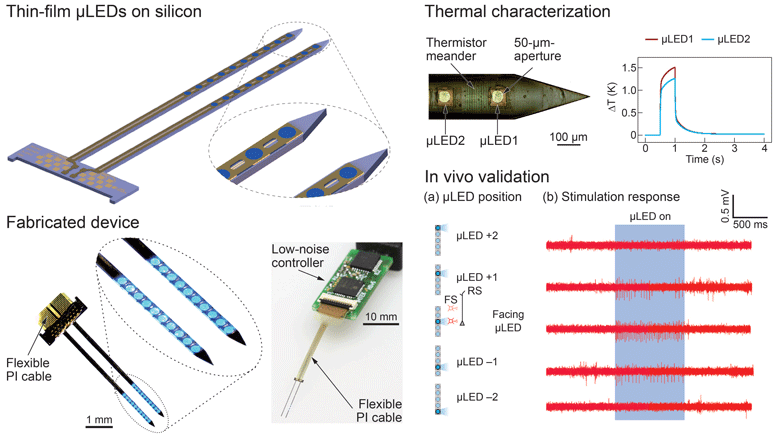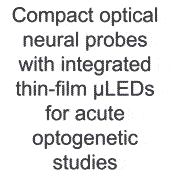
Implantable optogenetic tools based on micro light-emitting diodes (µLEDs) have most often implemented these bright light sources either as bare µLED chips through their hybrid integration or by processing GaN-on-silicon substrates for direct µLED integration. Here we describe the development, characterization, and in vivo validation of compact optical probes realized using the wafer-scale transfer of µLEDs from epitaxial sapphire substrates to silicon carriers using eutectic bonding and laser lift-off. The microfabrication technology applied for this purpose offers the opportunity to process the functional GaN layer stack from both sides and hence enables to maximize the µLED efficiency. The novel intracerebral devices comprise μLEDs integrated along their slender probe shanks with up to 20 μLEDs per device. The cross-section of the shanks with lengths of up to 8 mm is limited to 150×65 µm while circular apertures confine the light emission with a peak wavelength of 455 nm to 100-µm-diameter spots. Devices are interconnected using highly flexible polyimide cables in order to mechanically decouple them from the peripheral electronics during in vivo experiments. Assembled probes emit a peak optical radiant flux of 440 μW (emittance 56mWmm−2) at 5 mA of driving current. The thermal characterization of test probes reveals a temperature increase of up to 1.5 K measured using an integrated thermistor. The compact driving circuitry developed for the tools enables the low-noise in vivo operation of the µLEDs in optogenetic experiments. Clearly discernible neural responses are elicited at radiant flux values between 1.36 μW and 17.5 μW; they successfully demonstrate the layer-specific in vivo stimulation in the mouse cortex.

